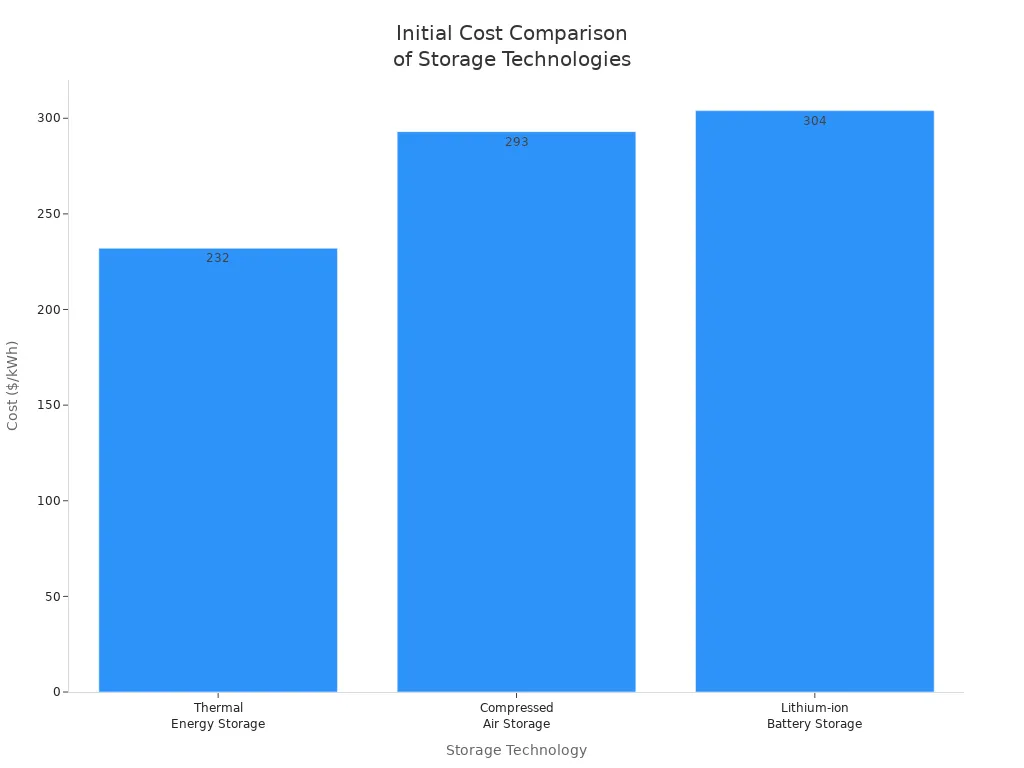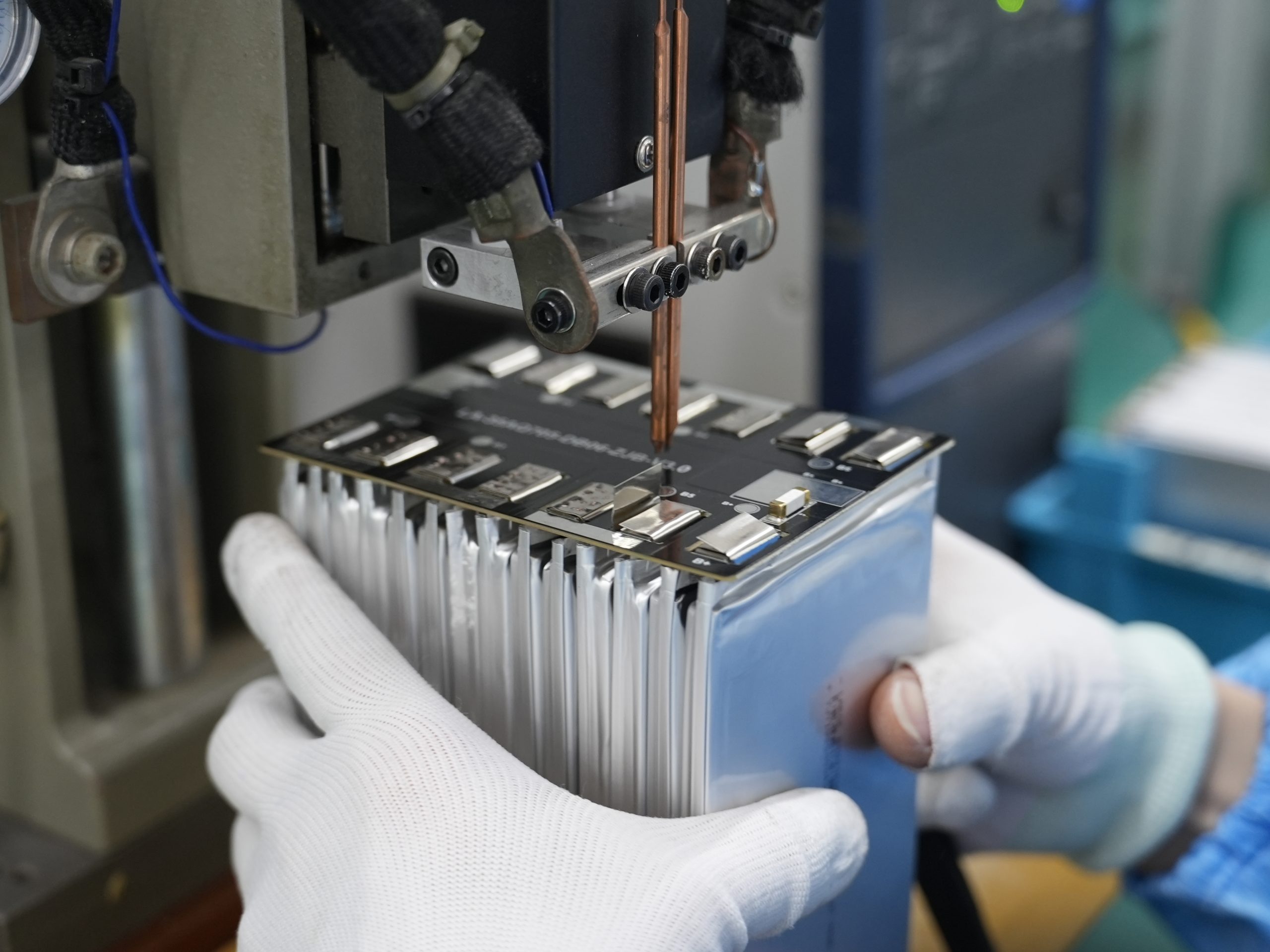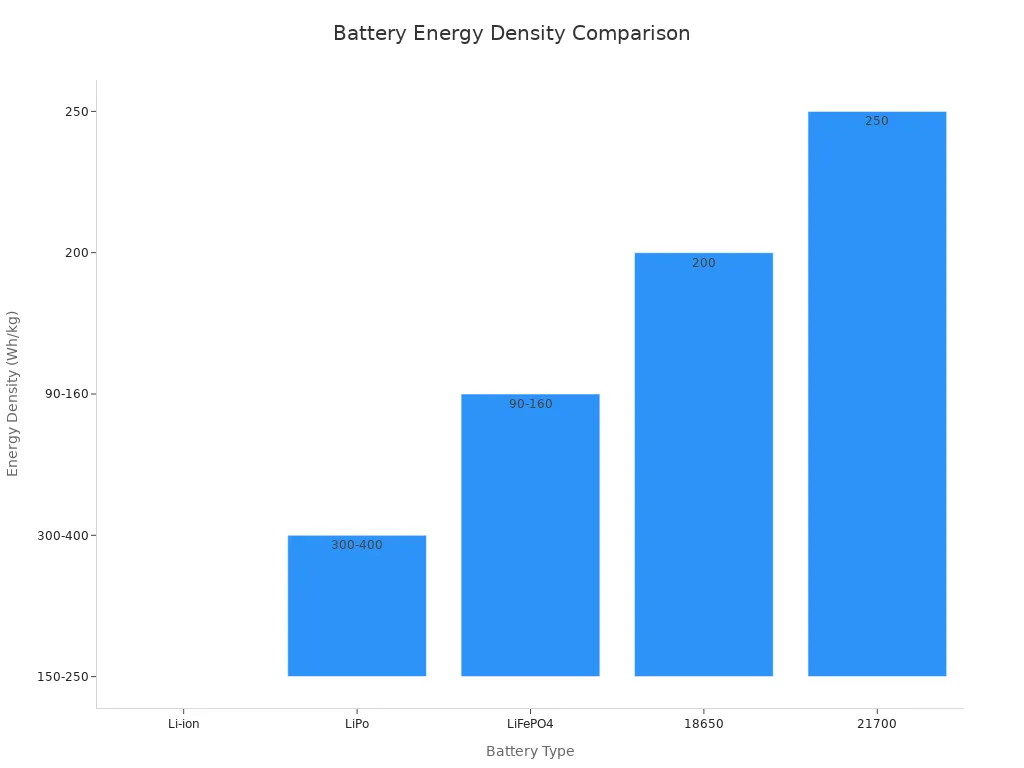
You will see lithium-ion and lithium iron phosphate batteries outperform non-lithium options in street lamp applications. Choosing the right battery impacts operational efficiency and long-term savings.
Swapping lead-acid for lithium cuts maintenance visits by 40%.
Smart solar systems deliver up to 40% total energy savings.
Lithium Battery of Traditional Street Lamp offers a cost-effective solution for municipal projects.
Metric | Description |
|---|---|
Charge Capacity | Powers the lamp through the night |
Efficiency | Maximizes usable output from stored energy |
Lifespan | Extends replacement cycles, lowering costs |
Temperature Impact | Maintains performance in extreme conditions |
Key Takeaways
Lithium batteries last longer and require less maintenance than non-lithium options, saving time and money for street lamp projects.
Choosing lithium batteries can lead to up to 40% energy savings, making them a smart choice for municipalities looking to reduce costs.
LiFePO4 batteries offer high safety and performance, ensuring reliable street lighting even in extreme weather conditions.
Part1: Key Findings
1.1 Performance Overview
When you evaluate battery types for street lamps, you see clear differences in performance and efficiency. Lithium batteries consistently deliver higher energy density and longer lifespan compared to non-lithium alternatives. You benefit from reduced maintenance and improved reliability, which translates into lower operational costs over time.
The following table highlights the core differences between lead acid and lithium-ion batteries:
Feature | Lead Acid Batteries | Lithium-Ion Batteries (LiFePO4) |
|---|---|---|
Lifespan | 3-5 years | 8-12 years |
Maintenance | Regular (flooded types) | Maintenance-free |
Energy Density | Low | High |
You notice that lithium ion batteries require less frequent replacement and offer maintenance-free operation. This advantage directly impacts the efficiency of your street lamp systems. Higher energy density means you can achieve greater battery capacity in a smaller footprint, which is critical for modern infrastructure projects.
Efficiency remains a top priority for municipalities and contractors. Lithium batteries provide superior charge retention and discharge rates, ensuring that street lamps operate reliably throughout the night. You minimize downtime and maximize usable energy, which supports sustainability goals and reduces total cost of ownership.
1.2 Suitability for Street Lamps
Selecting the right battery type for street lamps depends on climate, usage patterns, and installation constraints. You must consider battery capacity, efficiency, and long-term durability when making decisions for urban or rural environments.
The table below summarizes the advantages and limitations of common battery types used in street lighting:
Battery Type | Advantages | Limitations |
|---|---|---|
Lead Acid | Cost-effective, reliable, low maintenance | Short lifespan (3-4 years), lower efficiency |
GEL | Maintenance-free, excellent temperature range, longer cycle life | Higher cost compared to AGM and lithium-ion |
Lithium-Ion | High energy density, compact size, low self-discharge | Higher initial investment |
Lithium Iron Phosphate | High safety, long lifespan (6-10 years), maintenance-free | Higher cost compared to lead acid |
Flow | Scalable, excellent low-temperature operation | Complexity and cost limit use in street lighting |
You see lithium ion batteries and lithium iron phosphate batteries excel in environments where efficiency and reliability are essential. For rural roads and villages, lithium iron phosphate batteries with high capacity (80Ah–150Ah) support longer illumination during outages or cloudy days. In urban streets, moderate-capacity lithium iron phosphate batteries (40Ah–80Ah) enable energy-saving schedules and motion sensor dimming.
Environment Type | Battery Type | Capacity Range | Reason for Suitability |
|---|---|---|---|
Rural Roads & Villages | LiFePO₄ | 80Ah–150Ah | High capacity and deep discharge ability are ideal for longer illumination during outages or cloudy days. |
Urban Streets & Residential Areas | LiFePO₄ | 40Ah–80Ah | Moderate-capacity batteries support energy-saving schedules and motion sensor dimming in grid-connected systems. |
You must also weigh initial investment costs. Lithium batteries require a higher upfront investment, but their extended lifespan and efficiency often justify the expense for large-scale projects.
Technology | Cost ($/kWh) | Discharge Duration |
|---|---|---|
Thermal Energy Storage | 232 | > 8 hours |
Compressed Air Storage | 293 | > 8 hours |
Lithium-ion Battery Storage | 304 | 4 hours |

Tip: You can optimize long-term value by selecting lithium batteries with the right battery capacity for your specific street lamp application. Higher efficiency and reduced maintenance offset the initial investment, especially in municipal and infrastructure projects.
You gain the most benefit from lithium batteries when you prioritize efficiency, reliability, and total lifecycle cost. These battery types support advanced street lighting features, such as smart controls and adaptive brightness, which further enhance performance and sustainability.
Part2: Capacity & Energy Density

2.1 Lithium-ion Batteries
You gain a significant advantage when you choose a lithium ion battery for street lamp projects. These batteries deliver high energy density, which means you can store more energy in a smaller, lighter package. This feature directly improves efficiency and reduces the size and weight of your installations. In infrastructure and security applications, high energy density supports longer operational hours and advanced features like smart controls.
The following table compares the energy density of common battery chemistries used in street lamps:
Battery Type | Energy Density (Wh/kg) |
|---|---|
Li-ion | 150-250 |
LiFePO4 | 90-160 |
LiPo | 300-400 |
18650 | ~200 |
21700 | ~250 |

You notice that lithium ion batteries offer high energy density, which translates to greater efficiency and longer illumination times. When you select a larger capacity battery, you ensure that your street lamps remain bright throughout the night, even during periods of low sunlight. This reliability is essential for infrastructure and security lighting.
A larger battery capacity allows for extended illumination time, ensuring street lamps remain operational throughout the night.
Higher capacity batteries maintain consistent brightness, preventing premature dimming of lights.
In regions with limited sunlight, larger batteries can store more energy, ensuring functionality during low sunlight periods.
2.2 Traditional Lead-Acid Comparison
When you compare traditional lead-acid batteries to lithium ion batteries, you see clear differences in efficiency and installation requirements. Lead-acid batteries have lower high energy density, making them heavier and bulkier. This increases labor and maintenance costs for your projects.
Battery Type | Weight | Installation Requirements |
|---|---|---|
Lead-Acid | Heavier | More labor-intensive maintenance required |
Lithium-Ion | Lightweight | Easier installation, can be mounted without digging |
Lead-acid batteries are heavier, complicating transportation and installation.
Lithium batteries are smaller and lighter, simplifying installation and transport.
You achieve higher efficiency and performance with lithium ion batteries, making them the preferred choice for modern street lamp systems. Their high energy density supports advanced features and reduces total cost of ownership for B2B infrastructure projects.
Part3: Charge & Discharge
3.1 Charge Rate
You need to consider charge rate when selecting batteries for street lamp projects. Lithium-ion batteries, including LiFePO4 and NMC chemistries, offer much faster charging compared to traditional gel or lead-acid batteries. This rapid charging capability ensures your street lighting systems recover quickly after periods of low sunlight or heavy use. The integrated and controllable charging systems in lithium batteries also support advanced features like remote monitoring and smart controls, which are essential for modern infrastructure and security applications.
Feature | Lithium Batteries | Gel Batteries |
|---|---|---|
Environmental Impact | More environmentally friendly | Less eco-friendly |
Weight | Lighter (1/6 of lead-acid battery weight) | Heavier |
Service Life | Longer service life | Shorter service life |
Stability | More stable and safer | Less stable |
Temperature Adaptability | Operates in -20℃ to 60℃, can go to -45℃ | Limited temperature range |
Charging/Discharging System | Integrated, controllable | Standard system |
Note: Faster charge rates reduce downtime and improve operational efficiency, especially in large-scale municipal lighting projects.
3.2 Discharge Efficiency
Discharge efficiency directly impacts the performance and reliability of your street lamps. Lithium iron phosphate batteries deliver higher discharge efficiency than non-lithium options. This means you get more usable energy from each charge cycle, which extends battery lifespan and reduces maintenance costs. In contrast, lead-acid batteries lose more energy during discharge, which can cause lamps to dim or fail before dawn.
Battery Type | Charge/Discharge Efficiency | Performance Impact |
|---|---|---|
Lead-Acid | Lower than lithium | Potential energy losses affecting reliability |
Lithium | Higher | Better performance and reliability |
You benefit from the superior discharge efficiency of lithium iron phosphate batteries in demanding environments. These batteries maintain consistent brightness and support longer battery lifespan, even in extreme temperatures. For infrastructure and security lighting, this reliability is critical. You also reduce the frequency of battery replacements, which lowers total cost of ownership and supports sustainability goals.
Tip: Choose lithium iron phosphate batteries for street lamps to maximize discharge efficiency, extend battery lifespan, and ensure reliable performance in all conditions.
Part4: Lifespan & Durability

4.1 Lithium Iron Phosphate Batteries
You need batteries that deliver consistent performance and long service in demanding outdoor environments. Lithium iron phosphate batteries stand out for their impressive lifespan and robust durability. When you use lithium iron phosphate batteries in street lighting, you can expect:
A lifespan of 6 to 10 years, even with daily cycling.
Cycle life ranging from 1,500 to 2,000 deep cycles.
Superior safety compared to standard lithium-ion batteries, thanks to enhanced thermal stability.
Reliable operation in outdoor infrastructure, security, and industrial applications.
Temperature and humidity play a major role in battery durability. Lithium iron phosphate batteries operate best within a specific temperature range. High temperatures can speed up electrolyte degradation, reducing lifespan. Low temperatures slow lithium-ion movement, which affects charge and discharge efficiency. These batteries resist heat build-up and maintain structural integrity under higher temperatures, making them ideal for outdoor use. Unlike other lithium-ion chemistries, lithium iron phosphate batteries continue charging below freezing, which boosts reliability in cold climates.
Note: You gain peace of mind with lithium iron phosphate batteries because they offer safer chemistry and longer lifespan, even when exposed to harsh weather.
4.2 Cycle Life
Cycle life determines how many times you can fully charge and discharge a battery before its capacity drops below 80%. Lithium iron phosphate batteries deliver over 2,500 cycles, far surpassing lead acid batteries. In comparison, lead acid batteries typically provide only 300 to 500 cycles at 50% depth of discharge. This difference has a direct impact on total cost of ownership and maintenance schedules.
Battery Type | Typical Cycle Life | Lifespan (years) | Maintenance | Efficiency (%) | Price Impact |
|---|---|---|---|---|---|
Lead Acid Batteries | 300–500 | 3–5 | Regular | 80 | Low upfront, high long-term |
Lithium Iron Phosphate Batteries | 2,500+ | 6–10 | None | 95 | Higher upfront, lower long-term |
Standard Lithium-ion Batteries | 2,000–5,000 | 8–12 | None | 95 | Higher upfront, lower long-term |
You see that lithium iron phosphate batteries last up to ten times longer than lead acid batteries. This extended lifespan means fewer replacements and less downtime for your street lighting systems. Although the initial price of lithium iron phosphate batteries is higher, you save on maintenance and replacement costs over the system’s lifespan. On a cost-per-cycle basis, lithium iron phosphate batteries are three times more cost-effective than lead acid batteries.
Tip: For infrastructure projects, always consider the total cost of ownership, not just the upfront price. Lithium iron phosphate batteries offer the best value for long-term street lighting performance.
You should choose lithium-ion or lithium iron phosphate batteries for street lamps. These options deliver high energy density, long lifespan, and reliable performance.
Battery Type | Advantages | Limitations |
|---|---|---|
Lithium-ion | High energy density, efficient, long life | Higher initial cost |
Lead-acid | Lower upfront cost | Short lifespan, frequent maintenance |
Lithium batteries support sustainability and smart controls, reducing energy bills and maintenance for municipal projects.
FAQ
What makes lithium rechargeable batteries ideal for solar street lights in infrastructure and security projects?
You gain high battery performance, long cycle life, and safety. Lithium rechargeable batteries support solar street lights in infrastructure application.
How does Large Power customize battery technology for solar street lights?
Large Power offers custom battery solutions for solar street lights. You get tailored battery technology for solar lighting systems. Explore custom battery solutions for your project needs.
What factors affect the cost and safety of solar street lights using lithium battery technology?
You must consider battery performance, cycle life, and safety. Lithium rechargeable batteries reduce maintenance and improve safety. Solar street lights offer long-term cost savings and reliable performance.






